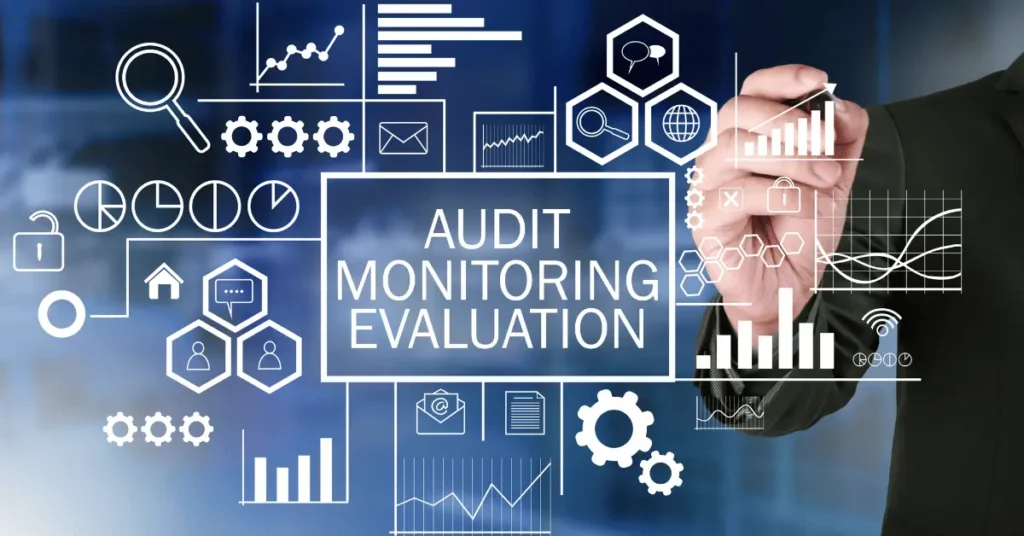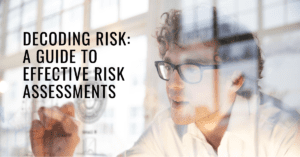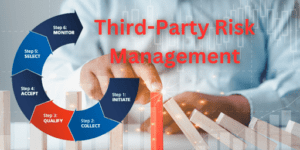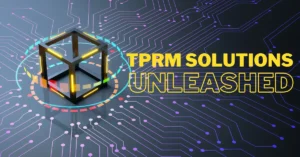Looking to ensure the trustworthiness and security of the companies you work with? Want to proactively identify and mitigate potential risks?
Discover the best practices for successful vendor risk assessment. By evaluating third-party risks, you can strengthen relationships, promote security control best practices, and make informed decisions when selecting vendors.
Whether it’s during partner search, after a security breach, or for audit requirements, following these practices and using the right tools streamlines the assessment process and ensures compliance. Are you ready to protect your organization?
- Key Takeaways
- Understanding the Importance of Vendor Risk Assessment
- Identifying and Categorizing Vendor Risks
- Establishing a Robust Vendor Selection Process
- Conducting Comprehensive Due Diligence on Vendors
- Developing Effective Vendor Risk Mitigation Strategies
- Implementing Ongoing Monitoring and Oversight of Vendors
- Ensuring Regulatory Compliance in Vendor Relationships
- Continuously Improving Vendor Risk Assessment Processes
- Frequently Asked Questions (FAQ)
- Final Thoughts
Key Takeaways
- Conduct a vendor risk assessment during the search for potential partners or during the onboarding process, after a security breach, when new hardware or software is installed, during contract renewal, or to satisfy audit requirements.
- Components of a vendor risk assessment include assessing strategy risk, cybersecurity risk, data privacy risk, monetary risk, compliance risk, and operational risk.
- Steps and tools for conducting a vendor risk assessment include determining risk criteria and scoring system, cataloging potential vendors and gathering information, assessing risks of each vendor, mitigating identified risks, monitoring and reviewing adherence to risk management measures, and continuously reassessing and updating the assessment process.
Understanding the Importance of Vendor Risk Assessment
Understanding the importance of vendor risk assessment allows you to proactively identify and mitigate potential risks to your organization. Vendor risk assessment is a crucial process that helps ensure the trustworthiness and security of the companies you work with. By assessing risks from contractors, vendors, suppliers, and other business partners, you can avoid bad actors and protect your data.
Implementing best practices for successful vendor risk assessment is essential. It allows you to proactively identify and assess the risks associated with third parties. This knowledge enables you to make informed decisions and take appropriate actions to mitigate those risks. By following best practices, you can promote security control best practices and ensure proper due diligence.
One of the key benefits of vendor risk assessment is that it allows you to proactively identify and mitigate risks before they become serious issues. This helps in incident response planning and preparedness, as well as strengthens relationships with suppliers, vendors, and third parties. Additionally, it makes the vendor selection process faster, more efficient, and reduces costs.
To conduct a vendor risk assessment, it is important to have a comprehensive understanding of the components involved. These include strategy risk, cybersecurity risk, data privacy risk, compliance risk, and operational risk. Each component plays a crucial role in evaluating the potential risks associated with third parties.
Identifying and Categorizing Vendor Risks

You can identify and categorize vendor risks by evaluating the potential impact they may have on your organization’s intellectual property, data privacy, compliance, and operational processes. This assessment allows you to proactively manage and mitigate risks associated with your third-party vendors. By conducting a thorough evaluation, you can ensure that your organization is working with trusted partners who will meet your needs and comply with policies and standards.
To help you identify and categorize vendor risks effectively, you can use a vendor risk assessment questionnaire or checklist. These tools will guide you through the process of evaluating different aspects of your vendor’s operations and determine the level of risk they may pose to your organization. The following table provides an example of how you can categorize vendor risks based on different criteria:
| Risk Category | Description | Example Questions |
|---|---|---|
| Intellectual Property | Evaluate if the vendor may compromise your organization’s intellectual property or sensitive business information. | Does the vendor have proper security measures in place to protect your intellectual property? |
| Information Security and Data Privacy | Assess how the vendor handles data privacy and information security. | Does the vendor have data protection policies, procedures and controls in place? |
| Compliance | Determine if the vendor follows relevant laws, regulations, and security frameworks. | Has the vendor undergone any independent audits or certifications? |
| Monetary | Determine the vendors’ practices related to foreign exchanges, invoicing and billing. | Does the vendor protect against transaction fraud and exchange rate schemes. |
| Operational | Review the vendor’s daily operations, policies, and procedures to ensure they won’t put your organization at risk. | Does the vendor have a disaster recovery plan in place? |
By evaluating these different risk categories, you can gain a comprehensive understanding of the potential risks posed by your vendors. This knowledge will enable you to make informed decisions and implement appropriate risk mitigation measures.
In the next section, we will discuss the importance of establishing a robust vendor selection process to ensure that you are working with vendors who align with your organization’s risk tolerance and meet your specific requirements.
Establishing a Robust Vendor Selection Process
To establish a robust vendor selection process, consider implementing clear criteria and guidelines that align with your organization’s risk tolerance and specific requirements. A thorough vendor risk assessment is an essential component of an effective third-party risk management program. By conducting a vendor risk assessment, you can evaluate the potential risks associated with working with third-party vendors and take proactive measures to mitigate those risks.
A vendor risk assessment framework provides a structured approach to assessing and managing vendor risks. It involves identifying and categorizing risks based on factors such as strategy risk, cybersecurity risk, data privacy risk, compliance risk, and operational risk. By evaluating these risks, you can gain a comprehensive understanding of the potential threats posed by vendors and make informed decisions about which vendors to engage with.
Implementing a vendor risk assessment framework offers several benefits. It allows you to proactively identify and mitigate risks before they become serious issues. It also promotes security control best practices and proper due diligence, strengthening your relationships with suppliers, vendors, and third parties. Additionally, it streamlines the vendor selection process, making it faster, more efficient, and cost-effective.
To conduct a comprehensive vendor risk assessment, you will need to gather information about potential vendors and assess their risks based on the established criteria. Mitigate identified risks through controls and measures, and continuously monitor and review vendors’ adherence to risk management measures. By continuously reassessing and updating your vendor risk assessment process, you can ensure ongoing compliance and a secure vendor relationship.
Conducting Comprehensive Due Diligence on Vendors

When conducting comprehensive due diligence on vendors, it’s essential to gather and evaluate relevant information to make informed decisions about potential risks and partnerships. One of the key components of this process is conducting a vendor risk assessment. This assessment involves evaluating the risks posed by third-party vendors to your organization. To ensure a thorough assessment, it is helpful to use a third party vendor risk assessment template, which provides a structured framework for evaluating different risk categories.
The first step in conducting a vendor risk assessment is to gather information about potential vendors. This includes collecting details about their role, access requirements, and operations. Once this information is obtained, it can be used to assess the risks associated with each vendor. This assessment should cover various risk categories such as strategy risk, cybersecurity risk, data privacy risk, compliance risk, and operational risk.
To effectively mitigate identified risks, it is important to have a vendor risk assessment report sample, which outlines the controls and measures that will be implemented. This report will serve as a roadmap for managing risks and ensuring that vendors adhere to the necessary risk management measures.
In addition to the initial assessment, it is crucial to continuously monitor and review the vendor’s adherence to risk management measures. This can be done through regular check-ins, ongoing evaluations, and annual assessments. By regularly reassessing and updating the vendor risk assessment process, organizations can ensure ongoing compliance and maintain a secure vendor relationship.
Developing Effective Vendor Risk Mitigation Strategies
Developing effective strategies to mitigate risks associated with vendors is crucial for maintaining a secure and trustworthy business environment. Here are four key steps to help you develop effective vendor risk mitigation strategies:
- Conduct a comprehensive vendor risk assessment: Start by assessing the risks associated with each vendor. Use vendor risk assessment software to streamline the process and ensure consistency. Identify potential vulnerabilities and prioritize them based on their impact on your business.
- Implement risk mitigation controls: Once you have identified the risks, develop and implement controls to mitigate them. These controls may include contractual obligations, security measures, and ongoing monitoring. Make sure to communicate these requirements clearly to your vendors and regularly review their compliance.
- Establish strong vendor relationships: Building strong relationships with your vendors is essential for effective risk mitigation. Foster open communication, regular meetings, and collaborative problem-solving. By establishing trust and mutual understanding, you can better address risks and work together to find solutions.
- Continuously review and update your strategies: Risks and business environments are constantly evolving, so it’s important to regularly review and update your vendor risk mitigation strategies. Stay informed about emerging threats, industry best practices, and regulatory requirements. Adjust your strategies accordingly to ensure ongoing effectiveness.
Implementing Ongoing Monitoring and Oversight of Vendors
Now that you have developed effective vendor risk mitigation strategies, it is crucial to implement ongoing monitoring and oversight of your vendors. This is a key component of a successful third-party risk management program.
One best practice for implementing ongoing monitoring is to utilize an automated vendor risk assessment tool. This tool can streamline the monitoring process by continuously evaluating the risks associated with each vendor. It can provide real-time updates on any changes in the vendor’s risk profile, such as new vulnerabilities or compliance issues. This allows you to stay informed and take prompt action to mitigate any emerging risks.
Additionally, ongoing monitoring should include regular assessments of the vendor’s performance and adherence to your organization’s risk management measures. This can be done through periodic reviews and audits. By continuously reviewing and evaluating the vendor’s activities, you can ensure that they are maintaining a high level of security and compliance.
Furthermore, ongoing monitoring should involve clear communication channels between your organization and the vendor. Regular meetings and discussions can help address any concerns or issues that may arise. It is important to maintain an open dialogue to foster transparency and trust.
Ensuring Regulatory Compliance in Vendor Relationships
To ensure regulatory compliance in your vendor relationships, it is important to regularly review and assess the vendor’s adherence to relevant laws, regulations, and industry standards. This will help you identify any potential risks or violations that could impact your organization. Here are four best practices for successful vendor risk assessment:
- Conduct a thorough third-party vendor risk assessment: Start by evaluating the vendor’s compliance with applicable laws, regulations, and industry standards. This includes reviewing their policies, procedures, and security controls. Look for any red flags or areas of concern that could pose a risk to your organization.
- Document the vendor risk assessment process: Keep a comprehensive record of your assessment activities, findings, and remediation plans. This will help you track the progress of your vendor relationships and demonstrate your commitment to regulatory compliance. It is also important to maintain a vendor risk assessment report that outlines the assessment results and any recommended actions.
- Establish clear expectations and requirements: Clearly communicate your expectations regarding regulatory compliance to your vendors. This includes providing them with detailed guidelines, policies, and procedures that they need to follow. Regularly communicate with them to ensure ongoing compliance and address any issues that may arise.
- Continuously monitor and update vendor risk assessments: Vendor risk assessment is an ongoing process that requires regular monitoring and updates. Stay up to date with changes in laws, regulations, and industry standards to ensure that your vendors remain compliant. Regularly review and assess their adherence to your requirements and make any necessary adjustments to mitigate risks.
Continuously Improving Vendor Risk Assessment Processes

You can enhance your vendor risk assessment processes by regularly evaluating and updating your assessment criteria, incorporating feedback from stakeholders, and leveraging technology to streamline and automate the assessment process. By regularly evaluating and updating your assessment criteria, you ensure that your risk assessment remains relevant and effective in identifying and mitigating risks associated with third-party vendors. This allows you to adapt to changing business needs and emerging risks. Incorporating feedback from stakeholders, such as internal departments and external partners, provides valuable insights and perspectives that can improve the accuracy and comprehensiveness of your risk assessment. Their input can help identify blind spots and areas of improvement.
Leveraging technology to streamline and automate the assessment process can save time and resources, while also improving accuracy and consistency. Technology solutions, such as vendor risk management software, can help centralize and standardize the assessment process, automate data collection and analysis, and provide real-time reporting and monitoring capabilities. This enables you to efficiently manage a large number of vendors and consistently apply your TPRM framework. By implementing these best practices, you can enhance the effectiveness and efficiency of your vendor risk assessment processes, reducing potential risks and ensuring the security and trustworthiness of your third-party relationships.
Frequently Asked Questions (FAQ)
1. What is a vendor risk assessment?
A vendor risk assessment is a process that assesses the potential risks associated with engaging third-party vendors or suppliers. It involves evaluating the vendor’s ability to meet compliance standards and effectively manage risks that may impact your organization’s operations, data security, or reputation.
2. Why is risk management important when dealing with third-party vendors?
Risk management is crucial when working with third-party vendors because they have the potential to introduce new risks and vulnerabilities into your organization. By conducting vendor risk assessments, you can identify and mitigate potential risks, ensuring that your organization’s operations are not compromised.
3. How does a vendor risk assessment process typically work?
A vendor risk assessment process involves several steps. Firstly, you identify the vendors you work with or plan to work with and gather relevant information about them. Then, you evaluate their level of risk by using assessment questionnaires or templates commonly used in your industry. Finally, based on the assessment results, you determine the appropriate risk management strategies and implement them.
4. What are the best practices for conducting a vendor risk assessment?
Some best practices for conducting a vendor risk assessment include:
- Developing a comprehensive vendor risk management program
- Using standardized assessment questionnaires
- Ensuring vendor compliance with applicable regulations
- Performing due diligence on potential vendors
- Regularly monitoring and reassessing vendor risks
5. How can I ensure information security when working with third-party vendors?
To ensure information security, it is important to implement vendor security measures. By assessing the vendor’s security protocols, conducting appropriate due diligence, and establishing clear contractual requirements regarding data security, you can mitigate potential risks and protect your organization’s sensitive information.
6. What is the role of a vendor risk management program?
A vendor risk management program sets out the processes and policies your organization follows to identify, assess, and manage risks associated with third-party vendors. It helps establish a systematic approach to vendor risk assessment, ensuring that all vendors are evaluated consistently and potential risks are appropriately addressed.
Final Thoughts
In conclusion, by implementing effective vendor risk assessment practices, you can navigate the complex landscape of third-party relationships with confidence and ensure the security and trustworthiness of your business partners. Just as a skilled navigator guides a ship through treacherous waters, conducting comprehensive due diligence, establishing robust selection processes, and implementing ongoing monitoring will steer your organization towards success. Remember, by continuously improving your vendor risk assessment processes, you can navigate the ever-changing currents of regulatory compliance and make informed decisions that safeguard your organization’s future.
Contact Us for a FREE Consultation





